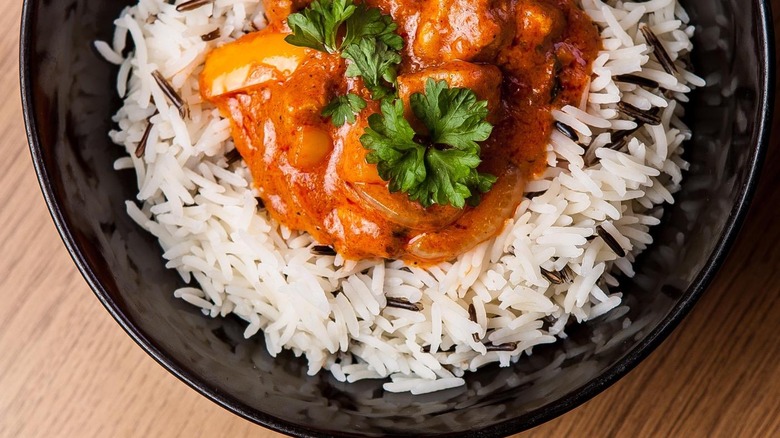What's The Difference Between Butter Chicken & Tikka Masala?
Your favorite take-out staples, decoded
While Indian cuisine is composed of a whole lexicon of dishes from crimson vindaloos to spicy phaals, each masterful in their use of spice and heat, it's hard to draw ourselves away from two favorites seen on nearly every Indian restaurant menu: butter chicken and chicken tikka masala. And while we can't help but be drawn to their familiar smokiness and happy orange tinge, few can explain the difference between the two.
Butter chicken originates from northern India, but chicken tikka masala is actually a British invention.
We have Kundan Lal Gujral to thank for creating what we know today as murgh makhani, or butter chicken, in 1948. Gujral ran a legendary restaurant in Delhi called Moti Mahal and needed a way to use up another popular creation of his, tandoori chicken. To prevent the already-cooked meat from drying out, he slowly stewed it in a gravy of tomatoes, aromatic spices and—you guessed it—butter.
And what about butter chicken's oft-confused variant, tikka masala? According to Floyd Cardoz, chef and owner of Paowalla in NYC, the entrée isn't even an authentic Indian dish at all. "Most folks think it is traditional Indian food from India!" he explains. Invented in the UK in the 1960s, tikka masala is similar in taste to butter chicken, but in the end, it's a quintessentially British dish, having its own blend of spices that differentiate it.
RELATED One-Pot Slow Cooker Indian Butter Chicken "
So why do these two dishes get so confused in the first place? "[Bad] Indian restaurants for the longest time simply didn't know the difference," Cardoz jokes. Moral of the story? If you're at a restaurant that doesn't know the difference, maybe it's time to give the paneer a try.
